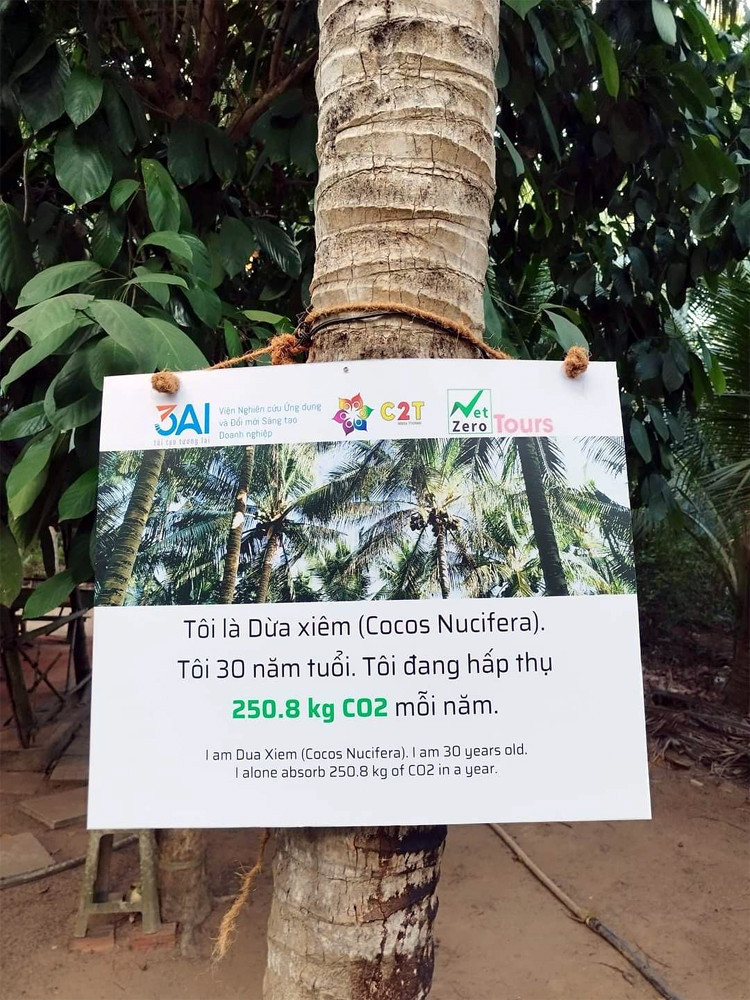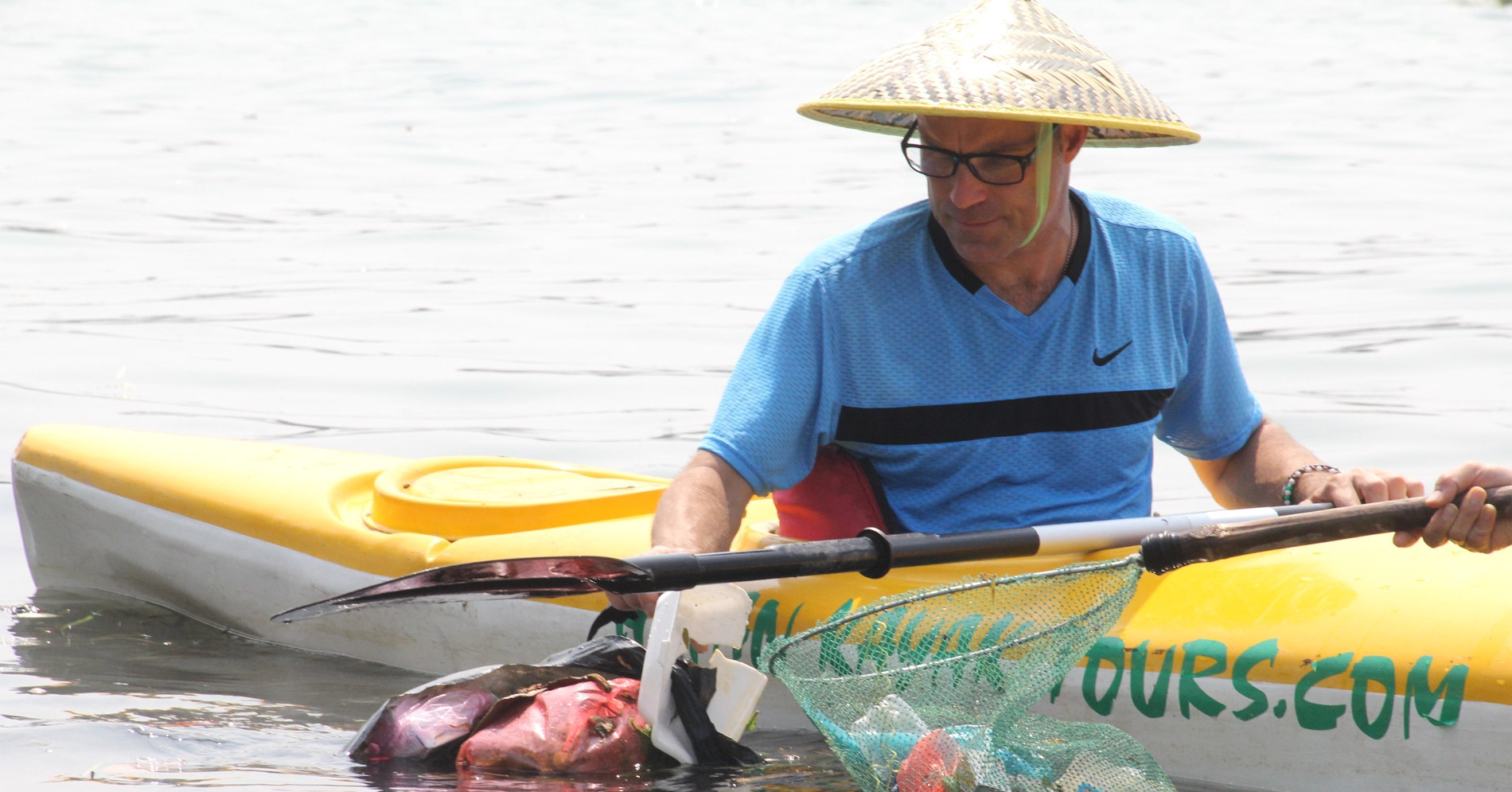Measuring footprints to reduce emissions
At the recent seminar titled “What Products for High-End Tourists Visiting Vietnam,” Nguyen Chau A, CEO of Oxalis Travel, highlighted that Vietnam emits 900 million tons of CO2 annually, while its forests absorb only 110 million tons. Although tourism is often referred to as a “smokeless industry,” it still contributes significantly to CO2 emissions.

Nguyen Chau A provided an example from Oxalis, which limits its Son Doong cave tours to 1,000 guests per year. Despite the company’s emphasis on eco-friendly practices, it still produces 1,009 tons of CO2 annually, primarily from activities outside the forest, with forest-based emissions amounting to just 20.8 kg. However, emissions from suppliers and external partners contribute over 600 kg.
To reduce environmental emissions, Nguyen Chau A suggested a three-step approach: first, assess the company’s and its products’ emissions; second, implement internal measures to reduce emissions; and third, work with partners and suppliers to cut emissions, eventually purchasing carbon credits to neutralize remaining emissions and achieve Net Zero.
The CEO of Oxalis noted that not only high-end tourists but also regular travelers are willing to pay more for eco-friendly tours that prioritize environmental responsibility and emissions reduction.
Oxalis is one of the first tourism companies in Vietnam to measure its greenhouse gas emissions, starting in 2023, and began taking action in 2024. The company aims to achieve Net Zero emissions within its operations (Scope 2) by 2026 and extend this to suppliers and partners (Scope 3) by 2030. This contributes to Vietnam’s national commitment to reach Net Zero by 2050, a goal that requires cooperation from all tourism companies, according to Nguyen Chau A.
Nguyen Quoc Ky, Chairman of Vietravel Holdings, observed that while Vietnam boasts more beautiful destinations than Thailand, it also produces more waste. To address this, Vietravel has advocated for a Go Green initiative with the National Tourism Authority, promoting eco-friendly travel that minimizes waste and emissions, eventually achieving zero emissions.
Since 2013, Vietravel has implemented Go Green across various provinces, starting with practical initiatives like distributing biodegradable bags to tourists, cleaning up trash at tourist sites, and more. The company also measures the carbon footprint (carbon step) of each tourist, evaluating greenhouse gas emissions from transportation, accommodation, dining, and entertainment. Based on this data, effective solutions are introduced to reduce emissions.
As President of the Vietnam Culinary Association, Ky proposed that restaurants work with chefs to adopt energy-saving practices and reduce waste, ultimately earning carbon labels for their establishments. He emphasized that this is a major endeavor that the association cannot achieve alone, urging government agencies to collaborate on policies and awareness campaigns.
From the first “green passport” to net zero tourism

Recently, Ben Tre province issued Vietnam’s first “Net Zero Passports” to 15 tourists participating in the “Net Zero Tours Ben Tre.” This tour, a notable example of Net Zero tourism, was developed by C2T Communications and Tourism Company in collaboration with the Institute for Applied Research and Business Innovation (3AI) and piloted in March 2024.
Upon disembarking, tourists receive a small notebook and pencil – known as the Net Zero Passport – to track the products used during the tour. They note which items contribute to carbon emissions and which reduce emissions, either balancing them during the tour or selecting the best offset options afterward. Tourists are also encouraged to play a game where they arrange pictures of activities in order of decreasing carbon emissions.
For example, participants compare the carbon emissions of eating a coconut versus a durian or between a durian and a jackfruit.
In addition to minimizing the use of plastic waste – such as bags, bottles, and straws – the Net Zero tour in Ben Tre sets strict guidelines, encouraging tourists to choose low-emission products throughout the journey to achieve a carbon-neutral experience.
Several “green tours” are already being offered across Vietnam, including cave exploration tours in Phong Nha-Ke Bang (Quang Binh), island-hopping tours in the “Tứ Bình” region (Khanh Hoa), sea turtle-watching tours in Hon Bay Canh (Con Dao), beach-cleaning tours in Van Don (Quang Ninh), agricultural tours in Tra Vinh, and forest-bathing tours in the Dong Nai World Biosphere Reserve.
According to the Vietnam National Tourism Administration, “Net Zero tours” are designed to minimize the carbon footprint of every aspect of travel—from transportation to accommodation and activities. All emissions are carefully calculated and offset through measures like tree planting, renewable energy use, and other emission-reducing projects to achieve carbon neutrality.
Ngoc Ha










